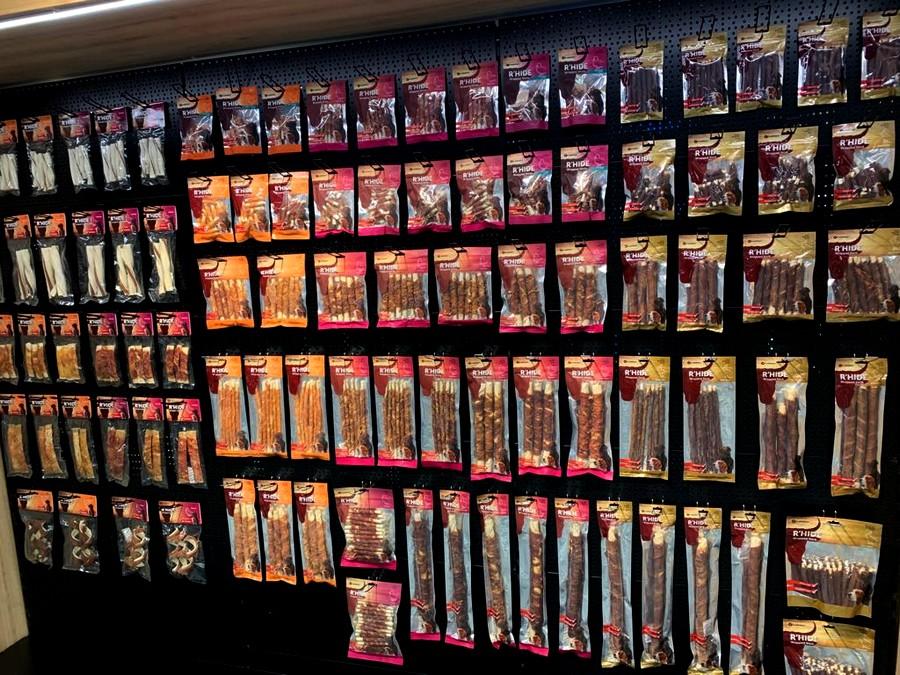With his mid-1800s introduction of the first dog biscuit, Mr. James Spratt probably suspected he was onto something big. But there's no way he could have known he was lighting the fuse on a $60 billion market for pet food and treats.
During 2022, pet treats (including rawhide chews) represented about one-fifth of those dollars, closing in on $12 billion, and treats remain a leading pet market category. Like many types of pet products, treats were at the right place at the right time during the pandemic, which helped to boost sales by 20 percent in 2020 and 18 percent in 2021, and the annual percentage gains remain in the low double digits thanks in part to inflation-related price hikes.
As of May 2023, nearly three-quarters (73 percent) of dog and cat owners used treats to bond and spend quality time with their pets, and nearly half (49 percent) were treating their dog/cat more frequently as a result of spending more time at home.
The enduring success of pet treats is, of course, more than a function of luck. As much as any pet product, treats dovetail pet health and pampering, and from that first biscuit, the market has been segmented every which way. The products are, in other words, anything but one size fits all, closely aligning with key trends in human foods and pet food overall.
Grain free, natural/organic, functional ingredient, novel protein and human grade are among the most sought-after types, with more indulgent items also in demand along with dental chews and treats that meet both functional and pet pampering/entertainment needs.
Topping the chart as of May 2023 was U.S. sourced, with 49 percent of the dog owners and 40 percent of the cat owners who had purchased treats in the previous 12 months opting for made in USA, with no artificial ingredients/preservatives, organic, grain free, natural, and limited ingredient also high on the list.
The COVID-19 effect has not been all good news for pet treats, which have been facing the same post-pandemic headwinds as most consumer categories in the form of record- high inflation. A potentially longer-term and not altogether positive impact is the acceleration in online shopping, which was already going strong. Frequently strategically placed on endcaps or near the checkout, treats are often a spur-of-the-moment purchase more likely to happen instore.
Over three-quarters (76 percent) of dog/cat owners buy pet food and treats on the same shopping trip instead of separately, and more than two-fifths (42 percent) view pet treats as an impulse purchase. In an omnichannel world where sales continue to shift onto the internet, it's on e-tailers and marketers to cross-promote treats to online shoppers in the market for pet food. As of 2022, e-commerce represented approximately 34 percent of dog and cat treat sales, but by 2027 that share is expected to rise to nearly 40 percent
Helping to pick up some of the slack is the slew of online-based subscription box programs that have popped up in the past several years. BarkBox, one of the earliest and now the largest, delivers on a monthly basis a range of products to pet owners including at least one treat sample.
Subscription boxes present an ideal opportunity for marketers to introduce products to pet owners on a "try it, like it, buy it again" basis, as well as to help offset the negative impact of missed in-store purchases. With the success of BarkBox and similar programs, treat-specific subscription programs have popped up, allowing pets and pet owners to try out a different selection of treats on a steady basis. Harkening to the potential, even pet specialty retailers have gotten on board, with Petco teaming up with PupBox and Chewy offering Goody Box.
At the same time, the business continues to shift in the direction of functional treats, which are increasingly doing double duty as, and competing with, pet supplements. In addition to catering to health-focused pet owners, functional treats appeal to value-conscious pet owners swayed by the idea of getting "two in one" value in treats that address specific conditions.
Functional treats serve as an integral part of many pet owners' pet health and wellness routines; as of May 2023, a large majority (70 percent) were willing to spend more for treats that addressed specific health concerns. Another flourishing segment is cat treats, as more marketers expand their offerings to embrace this "second-class pet," which is currently outpacing dogs in population growth.
Looking ahead, pet owners' commitment to pet health and pampering will remain key market drivers, and treats will continue to benefit from being a frequent pet market entry point and crossover opportunity from other categories such as pet food, pet supplements, pet toys, etc. Taken together, these trends portend a healthy outlook, with U.S. retail sales projected to near $18 billion in 2027, reflecting a compound annual growth rate north of 9 percent and billions more dollars' worth of Mr. Spratt's stroke of genius.
by David Lummis. Senior pet market analyst for the Packaged Facts brand within The Freedonia Group, a division of MarketResearch.com.
You could be interested: Understanding Minimally Processed: What It Really Means for Your Pets Food



































